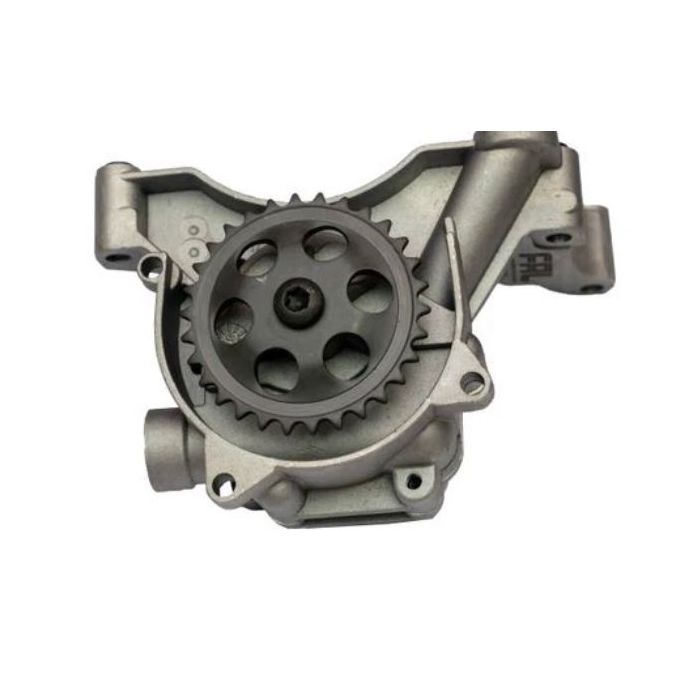Reduce maintenance costs with a well-built clp engine.
Reduce maintenance costs with a well-built clp engine.
Blog Article
Exactly How a Clp Engine Can Improve Performance in Numerous Industries
The advent of CLP engines notes a significant change in functional efficiency throughout different industries, driven by their capacity to maximize gas usage and reduce downtime. As organizations progressively prioritize sustainability along with effectiveness, the role of CLP engines comes to be even more essential.
Overview of CLP Engines
CLP engines, or Continual Fluid Propellant engines, represent a considerable innovation in propulsion modern technology, especially for area applications. These engines use a continual feed system that permits the continual expulsion of propellant, bring about enhanced efficiency and performance compared to conventional solid or hybrid propulsion systems. By maintaining a constant flow of fluid propellant, CLP engines can attain much more precise drive control, which is important for maneuvering spacecraft in numerous objective scenarios.
The style of CLP engines integrates innovative materials and cutting-edge fuel monitoring systems. clp engine. This leads to reduced weight and boosted reliability, crucial aspects for long-duration space objectives. The constant procedure minimizes the danger of burning instability, a common challenge in conventional rocket engines.

Benefits in Manufacturing
The manufacturing of Continuous Fluid Propellant (CLP) engines offers numerous remarkable advantages that boost both efficiency and cost-effectiveness. One of the main benefits is the structured manufacturing procedure, which minimizes the complexity related to traditional propulsion systems. By making use of fluid propellant, makers can accomplish greater accuracy in engine efficiency, causing optimized energy result and minimized waste.
Furthermore, CLP engines facilitate a greater degree of modularity, permitting easier assimilation into various production lines. This versatility can significantly decrease lead times and enhance general operational adaptability. The use of CLP technology additionally has a tendency to minimize the requirement for comprehensive upkeep because of less relocating components, which equates into minimized downtime and operational prices.

Applications in Logistics
Leveraging Continual Fluid Propellant (CLP) engines in logistics offers significant advantages in functional performance and integrity. These engines give a durable remedy for numerous transport demands, allowing the smooth motion of goods across vast ranges. The integral layout of CLP engines permits constant power outcome, which translates into smoother and more foreseeable transport routines.
One of the key applications of CLP engines in logistics remains in sturdy freight transport, where they can drive both ground and aerial lorries. Their capacity to preserve high performance under differing tons conditions ensures that distribution timelines are satisfied, thus enhancing consumer contentment. Furthermore, CLP engines can be integrated right into automated logistics systems, assisting in real-time tracking and optimizing path planning.
Moreover, the longevity of CLP engines minimizes maintenance downtime, permitting logistics business to maximize their functional capabilities. This is specifically helpful in warehousing operations, where performance in managing and transferring items is vital. As logistics remains to additional reading progress, the integration of CLP engines stands for a forward-thinking method that not just improves efficiency but additionally supports the industry's growing needs for reliability and rate.
Effect on Power Efficiency
Exactly How do Continual Liquid Propellant (CLP) engines boost energy effectiveness in transportation? CLP engines use a regular flow of liquid fuel, maximizing burning procedures and preserving a secure drive result. This layout decreases power losses related to traditional combustion engines, where gas shipment can differ and bring about inefficiencies.
The continuous operation of CLP engines permits a much more reliable thermal cycle, causing greater specific impulse contrasted to conventional engines. clp engine. This translates to decreased gas intake for the very same amount of work done, considerably reducing functional prices throughout numerous transport sectors, including aviation and maritime industries
Furthermore, the capability of CLP engines to preserve ideal performance under varying tons conditions decreases the requirement for regular acceleration and deceleration, even more improving fuel efficiency. Improved energy efficiency not just adds to set you back financial savings however likewise causes reduce greenhouse gas discharges, aligning with global sustainability objectives.
Future Trends and Innovations
Arising innovations in Continual Fluid Propellant (CLP) engine innovation guarantee to revolutionize the landscape of transportation performance and sustainability. As markets pivot toward greener alternatives, CLP engines stand at the center, incorporating ingenious materials and layout techniques that boost performance while minimizing ecological influence.
One of the most encouraging patterns is the adoption of crossbreed systems that integrate CLP engines with sustainable power resources. This synergy can maximize fuel consumption and lower hop over to here discharges, aligning with international sustainability objectives. Furthermore, advancements in computational liquid dynamics (CFD) are facilitating the layout of more aerodynamically reliable engines, causing lowered drag and enhanced gas effectiveness.
Furthermore, the advancement of smart surveillance systems is readied to boost operational effectiveness. These systems leverage information analytics and IoT technology to enhance engine performance in real-time, making sure that the engines operate within their most effective criteria.
As research study remains to explore alternate propellant solutions-- such as biofuels and synthetic gas-- the future of CLP engines looks encouraging. By utilizing these advancements, industries can not only boost their efficiency however also contribute substantially to a cleaner, more sustainable future in transport.
Conclusion
In conclusion, CLP engines represent a significant advancement in efficiency throughout numerous sectors. The combination of sophisticated materials and fewer relocating Full Report components lessens maintenance requirements, while alignment with sustainability objectives placements CLP engines as an essential innovation for the future.
Report this page